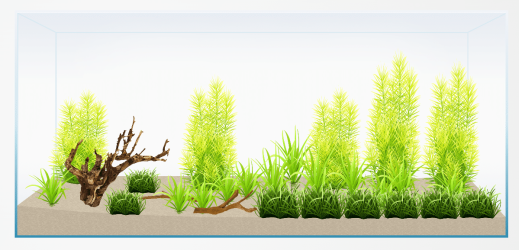elephantnose3334
Fish Addict
What if the Perth Zoo did breed the new species of hairy marron (discovered in the 1990s)? Why do zoos get permits on breeding natives while breeders, who try to save species from extinction, don't usually have a permit?Perth Zoo breeds the endangered Western Swamp Turtle but doesn't have much to do with fish.
There's virtually no information on the hairy marron as to its evolution, other than the smooth marron was an offshoot of the hairy marron and the smooth marron survived better.
To hold marron or any freshwater crayfish, use your fingers to grab them from above. You put your fingers on the sides of the carapace above the legs, near where it meets the tail. If you plan on holding them for a few minutes, hold them upside down.
Also today I saw a Perth river biotope tank with western pygmy perch, galaxias and a few others at the Perth Pases Aqua shop. They were in a large Juwel tank, but don't know the length, diameter and height of the tank. They also had some rainbows, American flagfish and some gudgeon species (peacock included) in Petworx tanks. It almost looks like a fishroom except they sell pond fish. I might do an American flagfish tank after I have done my project for my cardinal tetras (haven't got the tank or doing the project yet, it may take a while until I have enough money for both projects). I just need some plants native to Florida to make the flagfish tank work, but I don't know if my LFS sells North American native plants.
How did the orange-bellied parrot and Gouldian finch came into your mind? What's happening to them currently? Why didn't the government allow you to breed both birds? A captive breeding project could've helped wild populations thrive if the gov allowed you to breed them.This has been going on for decades. Back in the 1980s I was breeding native finches and small parrots. I had been trying to get orange bellied parrots but wasn't allowed. The birds were considered threatened and the government was looking for people to captive breed these birds. I was putting my hand up saying gimme some and they didn't care. There were a number of people in bird clubs around the country that could have bred them and they would have done it for free just to keep the species alive. None of us were allowed to have any. About 10 years later they gave some to a private zoo that started breeding them but during that 10 year period, the number of wild birds crashed to about 100 individuals.
The Gouldian finch is another one. For over a hundred years the local aboriginals in the Kimberley were telling the government not to burn the bush when they were. The aboriginals used to burn areas of bush at certain times of the year and it worked for thousands of years. White man came along and started burning the bush when they wanted to, which was the wrong time of year. Gouldian finch numbers dropped because the fires destroyed the food source and the birds were put on the endangered species list. Again they were looking for people to breed the birds. I actually kept them and said I would love to get a number of the birds for breeding just to add to my bloodlines. No chance. Years went past and they eventually found a farmer up north who was willing to breed them on his property. Again the numbers of birds had dropped dramatically while they were stuffing about trying to find breeders and it shouldn't have happened because there were literally hundreds of finch breeders around the country who wanted to help.



